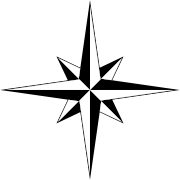

The other highlight for me was the Museo Santarios Andinos. The museum is focused on the ritual sacrifices the Inca people made. The volcanoes nearby were considered sacred places, and some were still active, both now and in the Inca times. To prevent natural disastors like floods, earthquakes and volcanic eruptions the Inca practiced human sacrifice. Every 7 years, during the time of El Nino a certain shellfish would appear, this was the sign for the Inca’s to perform the ceremony, as it usually preceded the floods that would happen at this time. Girls, pre selected for their beauty and perfectness from high ranking families, were specially raised in Cuzco. At the time of the ceremony they would undertake the pilgrimage to the sacred mountains, some near Cuzco and some as far away as Ecuador and Southern Chile, these pilgrimages could take months. The journey culminated in the high climb to the peak, often over 20k feet above sea level. The child would be wrapped in a specific ceremonial clothing, killed by a blow to the head and buried sitting down surround by decorated pottery and gold or silver figurines. The first of these was discovered in 1995 is named Juanita and is on display at the musuem. The museum had a nice tour, with a 20 minute movie and a guided tour that lasts about 40 minutes. The go through in detail the discovery of Juanita and further burial sites, the ceremony, the clothing worn, and the relics buried with the child. The tour culmnated in a viewing of Juanita, still frozen, so thus very well preserved. The tour was really in depth, it was great to have a smallish museum dedicated to just this one part of the Inca culture. I definitely recommend a visit, especially since no photos are allowed, so I have no pictures to share with you.
Our main reason for the visit to Arequipa was Colca canyon. In my research, this seemed like the standard jumping off place for Colca canyon, but as we learned, there are probably better ways to see this site. The drive to Colca Canyon is 4 hours, so to have any time at the canyon our tour started with a 3 am pickup. There had been a lightning storm and a scary electrical shortage in our apartment, we had slept nearly none. The road out was fairly rough too, but we managed some sleep in the van. We arrived at the canyon around 8. The tour included a basic breakfast, some stops in a few villages to see the local people, a few stops at some viewpoints of the canyon, and a stop at some thermal baths. The highlight is to see some Andes Condors from the viewpoints, one of the worlds largest birds, with a wingspan of over 9 feet. We were lucky to see them and have them pass just a few feet away from us at one of the viewpoints.

The canyon is considered the deepest in the world, though that point is disputed, it is at points 4k meters deep. The canyon in the rainy season is a beautiful mix of gray rock and green vegetation with Inca terraces all along the bottom. The views were breathtaking.


The thermal baths were okay, the sight was gorgeous along the river with the baths made of stone. But the water was just warm, so not the most relaxing thermal baths I have enjoyed. We stopped for a buffet lunch on the return, and the food was good, but I think it is to blame for the stomach ache I am suffering from as I write this. The ride back I was so tired I couldn’t keep my eyes open to watch the interesting scenery go by. We were back in town by about 5 that afternoon.
Now this tour can be done in 2 days, with a hotel stay near the canyon, the hotels didn’t get very good reviews and it didn’t visit any additional sites in the canyon. So while the canyon was awesome, I wouldn’t recommend visiting it from Arequipa as the travel distance is too far to really enjoy it. Next time I would add it as a stop between Nasca and Arequipa, we saw some really beautiful looking eco resorts near the thermal baths near Chivay. My ideal trip would have been hiring a driver for the day to drive you from Nasca with stops along the Colhausi canyon to also catch the sites there, adding a hike if possible. Then 2 nights in the eco resort leaving a whole day to explore Colca canyon with a local guide. And then take the bus from Chivay to Arequipa.
Despite my complaints on the Colca canyon tour. I would not recommend skipping this, as the canyon and the condors were really awesome. So if you are short on time, go for the 1 day trip, just plan to be tired when you are done. And I totally recommend Nativa tours, the staff in town were excellent, and checked back with us many times leading up to and following tour, and the tour and guide were run excellently.




